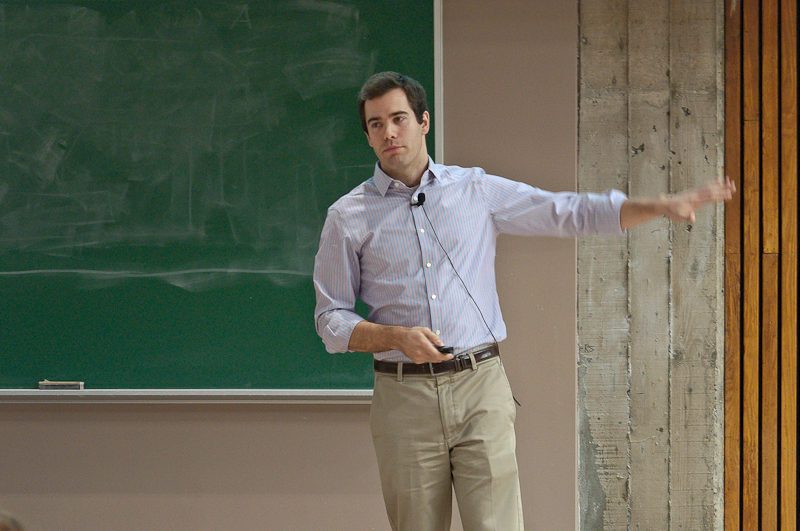Two special visitors had the American Helicopter Society (AHS) and Carleton flying high Jan. 9.
Todd Reichert and Cameron Robertson are team leaders of AeroVelo, the group that won the AHS Igor I. Sikorsky Human Powered Helicopter Competition.
The duo paid a visit to the university to talk about their work and prestigious prize, worth $250,000 according to the competition’s website.
According to Reichert, they first met at the University of Toronto (U of T) and, prior to taking on the Sikorsky challenge, had worked on the Snowbird, the first successful human-powered ornithopter—a flapping wing aircraft—in 2010.
After this accomplishment, Reichert said the two came to the realization they could create a helicopter for the Sikorsky Competition using the technology they developed on the ornithopter.
The Sikorsky Competition was created in 1980 and challenges competitors to build a human-powered aircraft that can sustain flight for 60 seconds at a height of three metres while staying within the perimetres of a ten-by-ten metre square.
AeroVelo’s work began in the spring of 2012, Reichert said, with Reichert finishing off his PhD and Robertson quitting his job in order to lead the group, made up largely of U of T engineering students.
The project took a total of 18 months to finish and, according to Reichert, it wasn’t easy.
But Robertson credited the team’s work ethic as a key feature to their success.
“We didn’t really hold back, we were very single-minded and focused in our pursuit of winning the requirements,” he said. “We had an excellent team put together who was very passionate, driven, ready to overcome pretty much any obstacle.”
Robertson said he believes this approach, combined with the team leaders’ four years of experience building the ornithopter, made them successful.
But the process was still a difficult one.
“It’s pretty intense stuff to work on. There’s a lot of anxiety,” Robertson said. “We definitely had some pretty huge crashes and setbacks.”
Knowing they were close to finishing the project, the team never gave up. Still, Reichert said there was a sense of surprise when they achieved their goal.
“It had been so long that we’d been working on it and we had been through so much, it’s weird when it sets in that ‘Wow, we actually finally did it,'” Reichert said.
Now, Reichert said the aircraft is temporarily residing in Tottenham, Ont.
“We are currently talking with the Ontario Science Centre and a couple other museums for where it will find a permanent home,” he said.
Meanwhile, the two are looking to continue working on further developments with AeroVelo.
“Our goal is to sustain AeroVelo as a student-based project . . . taking on pretty enormous and ambitious projects in human-powered vehicles,” Robertson said.
The group is currently developing land vehicles, Robertson said, having recently created a streamline bicycle able to reach 125 kilometres per hour. Their next goal is to break the human-powered land speed record.






